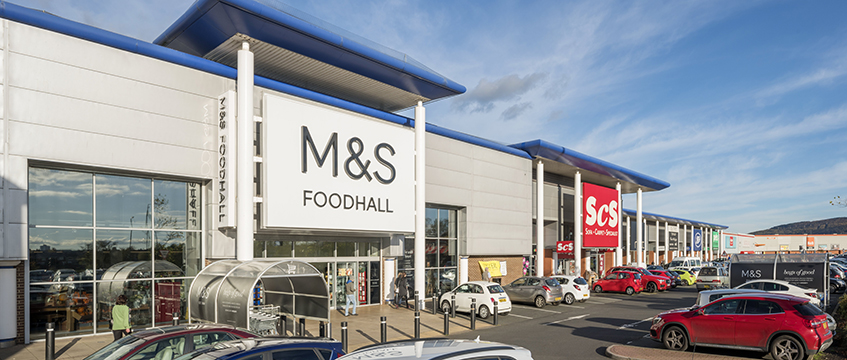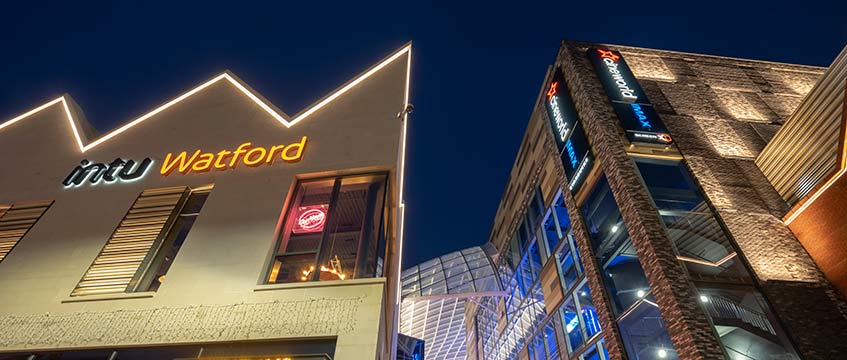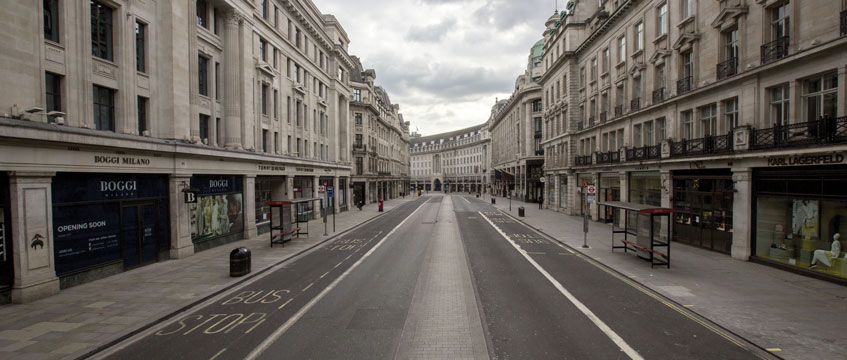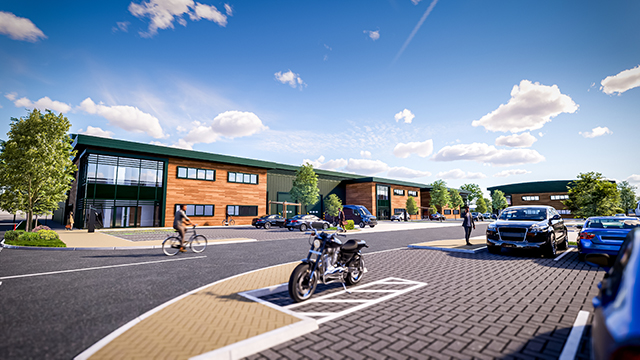January
After a flurry of deals in the wake of December’s general election, there was still some doubt in the market over whether the “Boris bounce” would last. But the first weeks of 2020 saw some notable deals and developments get underway: a £300m sale of the Sanctuary Buildings; new plans for Canary Wharf to invest in a massive scheme north of its estate; a planned revamp for the former London home of Goldman Sachs; and a retail-to-office development for Fenwick that foretold of many other such moves.
Robert Jenrick approved the redevelopment of Richard Desmond’s £1bn Westferry Printworks on the Isle of Dogs. That’s probably the last we’ll hear about that.
In one of many big-name departures and job changes this year, it was announced that Craig McWilliam was stepping down from Grosvenor nearly a year before he was due to take over as group chief executive. And, in a leader from editor Sam McClary published on the final day of the month, the first mention in EG’s archives of “coronavirus” in reference to the effect being seen on the global supply chain. If only we had known what was to come…

February
EG’s first London Office Market Analysis report felt like looking back at what might already be a bygone age, celebrating a return of confidence and clarity in the market during the final months of 2019 as “buyers loosened the purse strings”. In a landmark deal, Blackstone acquired iQ Student Accommodation from Goldman Sachs and Wellcome for £4.7bn in the largest ever private real estate transaction in the UK. Smaller but still notable was Hammerson’s £400m deal to sell a portfolio of retail parks to Orion.
News broke that British Land chief executive Chris Grigg was preparing to step down. Troubled intu confirmed talks with Hong Kong property giant Link REIT about a £1bn emergency cash call. And with the effect of Covid-19 becoming clearer and as company after company pulled out of annual real estate conference MIPIM owing to the spreading of coronavirus, the organisers were left with little choice but to cancel the event.

March
With signs emerging of just how badly retail companies and their landlords were likely to be hit by the Covid-19 pandemic, the government froze business rates for retail, leisure and hospitality tenants for a year, and introduced a moratorium on landlords evicting commercial tenants. For some, the writing was already on the wall.
Intu’s options for survival appeared to be dwindling after plans for an equity raising fell through, leaving the company with choices between a fire sale, finding a suitor or insolvency. Estate agency group Countrywide lost 80% of its share price in just seven days after both its own merger with LSL and a sale of Lambert Smith Hampton looked set to fail.
Deals including big London purchases from Blackstone looked to come unstuck as Covid-19 spread. And late in the month the UK entered lockdown, with real estate professionals suddenly forced to adapt to working from home.

April
With the UK officially in lockdown, real estate firms started to react with job cuts, furloughs and redundancy consultations. Some of the best-known industry leaders offered their thoughts on what the real estate sector would need to do to make it through what some already predicted would be the worst recession seen in generations. Prestbury Investments’ Nick Leslau warned that every business must focus on “liquidity and its preservation, as none of us know how long this will last”.
Using Radius Data Exchange figures, EG revealed just how much of the UK’s retail real estate is owned by the man in the street, and what government intervention between landlord and tenant could mean for pension pots. The Q1 instalment of LOMA showed just how subdued the London office market became during the opening months of the year, albeit with a Linklater lease lifting the performance.
On which note, the debate began over the future of the office and how to design the post-Covid workplace, on the assumption that the way we work will “change forever”. And EG launched its Lockdown Diaries column, offering some insights into how industry professionals had adapted to life in lockdown.

May
As activity started to pick up again, real estate began to map out a return to some degree of normality, whether getting staff back on-site for inspections or back to their desks (CBRE was an early mover in this regard, although many firms opted to give staff flexibility over when and how they returned). The government offered companies fresh guidance on staff returning to the workplace as businesses worked out just how much will need to change to keep their workforce safe.
Debate began over what post-Covid office demand would do to rents, with RBC and UBS predicting falls. Not everyone agreed, and Cushman & Wakefield’s UK chairman made an argument in EG for the strength of the London market. Amazon continued to gobble up space in the UK, striking sizeable deals to expand its footprint. And at Hammerson, chief executive David Atkins called time on his stint in the top seat.

June
After years of challenges only added to by the Covid-19 pandemic, intu entered administration, with KPMG overseeing the process and asset managers lining up to look at the company’s various shopping centres.
As controversy spread over Richard Desmond’s lobbying of Robert Jenrick ahead of the January approval of his Westferry Printworks development, EG took a deep dive into the pair’s emails and texts that were ultimately published.
The great retail repurposing continued with plans revealed to turn Westfield’s House of Fraser store into co-working offices. The ongoing damage caused to the events industry was clear as real estate companies started dropping out of the Expo Real event ahead of its format being changed to a hybrid of live and online events. And the industry paid tribute to Berkeley Group founder Tony Pidgley, described as “the doyen of residential property”.

July
News of redundancies across the big real estate agencies made clear just how challenging the Covid-19 crisis would be, as companies busied themselves reshaping their businesses in preparation for more fallout from the pandemic.
Tensions between landlords and tenants grew even more strained, as Frasers announced it would withhold rent indefinitely and Tesla too refused to cough up. Not all owner and occupier relationships were so combative – attempts to manage plummeting footfall in London’s West End, for example, saw a more collaborative approach emerge. And the government launched a “build, build, build” drive that promised the biggest planning overhaul in decades, including a radical revamp to permitted development rights.

August
In an unusual summer, dealmakers still at their desks tried to push through what transactions there were to be done. That did not prove easy – plenty of transactions hit the buffers and our second-quarter LOMA report laid bare just how badly activity in the capital’s office market had been hit by Covid. REITs’ profit warnings rocketed and the pay packets of industry leaders were slashed.
The debate over the future of the office continued to rage with companies reconsidering their real estate footprints, and flexible workspaces seen as a potential beneficiary from changing attitudes. EG published a three-part, in-depth series of reports using Radius data on the topic.
The ongoing reactions to the government’s proposed planning reforms stayed a hot topic, with discussions over what the changes would mean for real estate and the built environment.

September
As instances of Covid-19 picked up again, the government’s decision to introduce new restrictions, including advising people again to work from home if they can, were seen as a blow to any economic recovery and bad news for real estate owners. Schroders real estate head Duncan Owen told EG that the guidance risked turning London into “a doughnut” – empty in the middle.
A run of deals showed that the capital markets remained open for real estate companies and investors with a compelling story, not least Blackstone, which brought in $8bn for its largest property debt fund yet. New names also emerged to tempt investors, including Home REIT, a company looking to address the country’s homelessness problem.
The month saw a large number of high profile personnel moves, including the appointment of new chief executives at British Land, Hammerson and St Modwen, as well as a new chair for trade body EPRA. We also highlighted some of the individuals affected by redundancy rounds in the big agencies who took the opportunity to set up their own shop.

October
Deal markets remained suppressed but there were enough signs of life to keep both agents and investors busy entering the third quarter. Canada’s Cadillac Fairview returned to the UK with a deal to buy the White City Place development in London, while marketing began on London’s Scalpel with a price tag of £820m.
Not all deals progressed as planned, and the problems facing the debut listing on the real-estate focused IPSX exchange were an example of how tough getting transactions away had become. The IPO of Birmingham’s Mailbox was delayed not once, but twice, and company accounts revealed the financial challenges facing the exchange itself.
More tensions emerged between landords and tenants as EG broke news of the latest twists in attempts by the Edinburgh Woollen Mill Group to restructure its business at landlords’ expense. Meanwhile, Radius figures revealed just how much space landlords could be passed back if retail and food and beverage occupiers walk away at upcoming lease breaks. And shifting sentiment in various parts of the economy was underlined by more rethought development plans and change-of-use projects, including Panattoni’s sheds-to-data-centre play and John Lewis’s move to turn parts of its London flagship store into offices.

November
The third-quarter update to LOMA showed that, in the capital, at least, office market activity slumped during the third quarter. But debate continued to rage over the outlook: Nick Leslau described ongoing predictions of the death of the office as “silly talk” and Great Portland Estates boss Toby Courtauld said he believed a quality office “has got more important, not less”.
Tough times continued for agencies, with Q3 revenue plummeting at the largest names. But there were bright spots – a resilient set of results from Knight Frank allowed the agency to pay back furlough grants to the UK government. M&A activity rumbled on – Countrywide weighed a management-backed proposal from private equity house Alchemy Partners against a proposed takeover by rival Connells, while Wellcome Trust launched a bid for Urban&Civic and CBRE eyed the acquisition trail with a US listing of an M&A vehicle.
Guy Grainger, JLL’s EMEA chief, announced a new role overseeing ESG for the group globally. His replacement? A former professional basketball player who used to run early morning fitness bootcamps for the agency’s Silicon Valley team.

December
December began with the worlds of retail and real estate calculating the damage that would be done by the double blow of Sir Philip Green’s Arcadia entering administration and Debenhams collapsing. Banks began gearing up for a rise in problematic real estate loans next year, with Lloyds preparing to mandate CBRE to value properties against which it made loans.
M7 revealed that it is in takeover talks that could see it picked up by Oxford Properties, a development that officially pressed pause on the IPSX listing of its Mailbox asset.
In a note of hope, agency Gerald Eve said its most recent results, for the year to April, had shown record revenue and profit – and that activity since April had been “on a par” with the year before. And Knight Frank’s head of London commercial research, Faisal Durrani, said the first quarter of 2021 could be “the mother of all quarters” for investment in the capital.
Wishful thinking? We have just a few weeks to find out.












